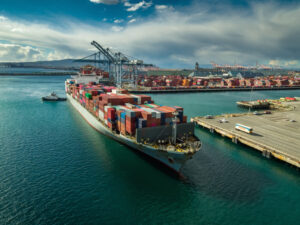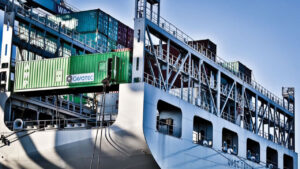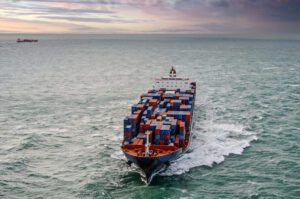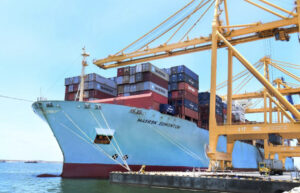Drewry Maritime Advisor’s latest container insight report looks at the impact of low bunker prices on shipping lines’ network planning, as well as how it is reducing cost advantages for containerships.
Bunker prices are now at a low level not seen since the early 2000s. When bunker prices increased by five times to levels in excess of US$600 per tonne, lines responded with a number of cost saving measures as they focussed on bunkers as the biggest single cost item in their business.
However, with the complete reversal of that trend, and bunker prices now in the range of $100-150 per tonne again, Drewry Maritime Advisors has examined how this change in the line’s cost structure may influence the way in which they plan and operate their networks.
Slow steaming – and later super slow steaming – became a feature of lines’ operations when bunker prices rose dramatically in 2007/8; then when the global financial crisis reduced demand, slow steaming also had the advantage of soaking up the surplus vessels.
However, with bunker prices recently approaching $100 per tonne, where does this leave the advantages of slow steaming?
Drewry has modelled the ship system costs (vessel, bunker, port and canal costs) for an illustrative Asia to North Europe loop, using 11, 10 or 9 ships to provide a weekly service, and with bunker prices at $100, $300 and $600 per tonne.
However, at a bunker price of $100 per tonne, there are clear cost savings from increasing service speed, and reducing the number of vessels per loop.
Lines and alliances will have carefully planned their networks, including terminal berth windows, based on their present slow steaming speeds. To increase service speed would require major re-planning, and potential disruption.
Lines may be nervous of making radical changes, in case bunker prices swing back up again – given the apparent inability of forecasters to predict these changes.
At present, as at the outset of slow steaming, there is an excess supply of tonnage, which would only be exacerbated if more ships were released as a result of speeds being increased.
While sudden change is unlikely, lines should be aware that the ongoing surplus of tonnage will get worse if there is a trend to remove ships from loops.
Operationally, the savings will still be made, irrespective of the bunker price. However the value of the bunker savings will diminish at lower bunker prices.
This suggests that low bunker prices may well give a new lease of life to Panamax vessels which, at current charter rates, can compete on costs with vessels twice their size on trades that cannot sustain the largest vessels.








